(AKA, a collection of trophies from a far-reaching empire)
It’s a tale of two hearts in one body. One broken, for all the countries and descendants of great civilizations separated from their historical treasures. Another jubilant, for the ability to see them all in one place, preserved, and woven together into a larger tapestry of civilization as it developed. Not many were in isolation after all. This is the great debate, still ensuing between governments.
But who can get very far in the discussion of this museum, or in a real life visit, without running toward and then gasping in awe of the amazing artifacts here?? Let’s begin.
The Rosetta Stone!
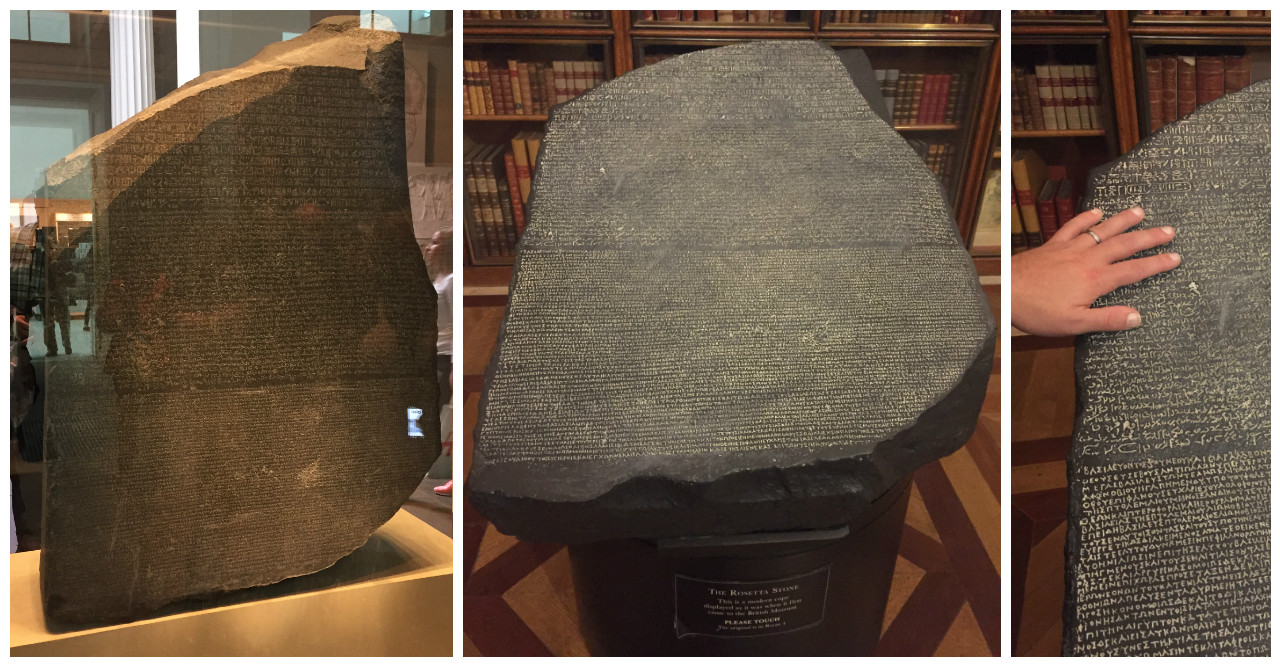
Possibly one of the most important discoveries, and certainly the most visited of the museum, the Rosetta Stone made it possible for present-day archeologists to decipher hieroglyphs. It contains a single decree from Ptolomy V written in three languages: Ancient Egyptian hieroglyphs on top, Demotic Script in the middle, and Ancient Greek at the bottom.
LOTS of Egyptian Works
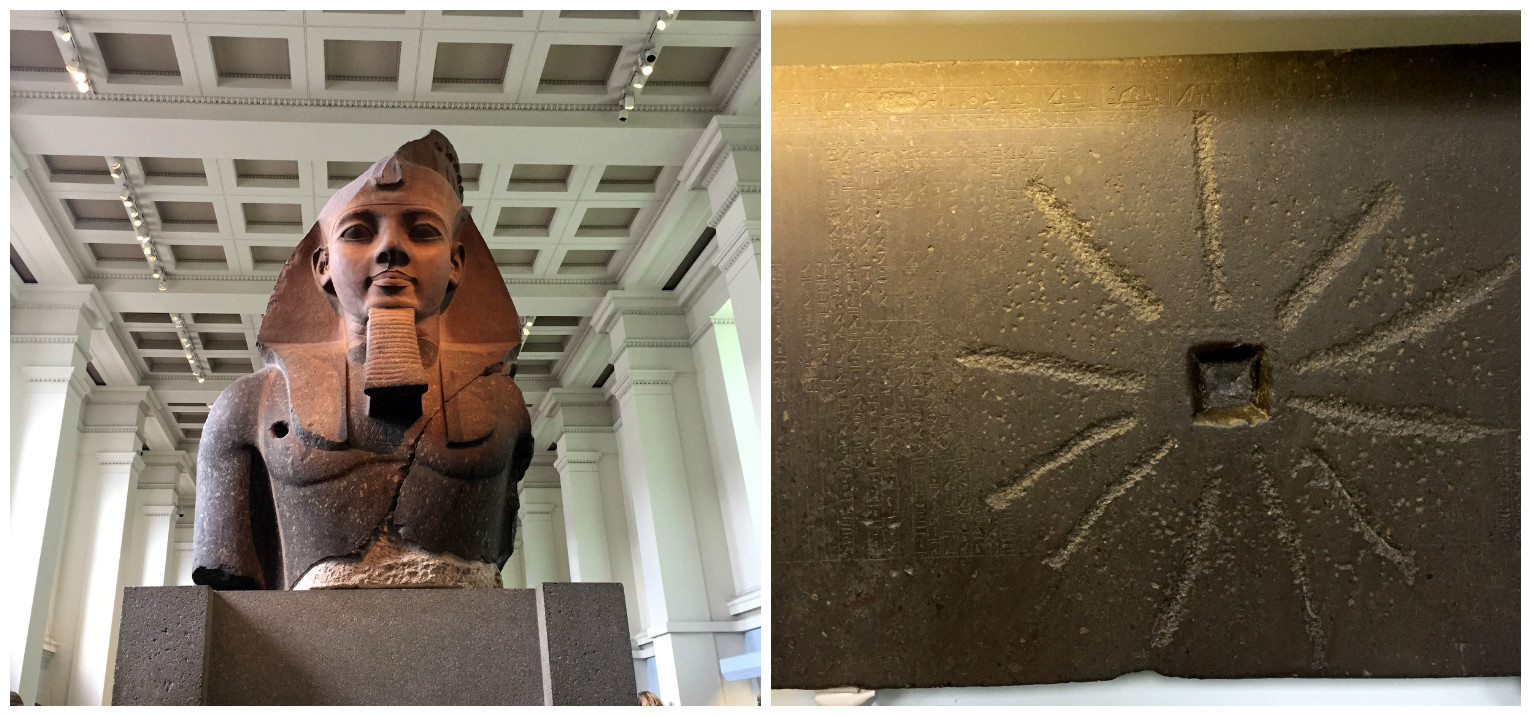
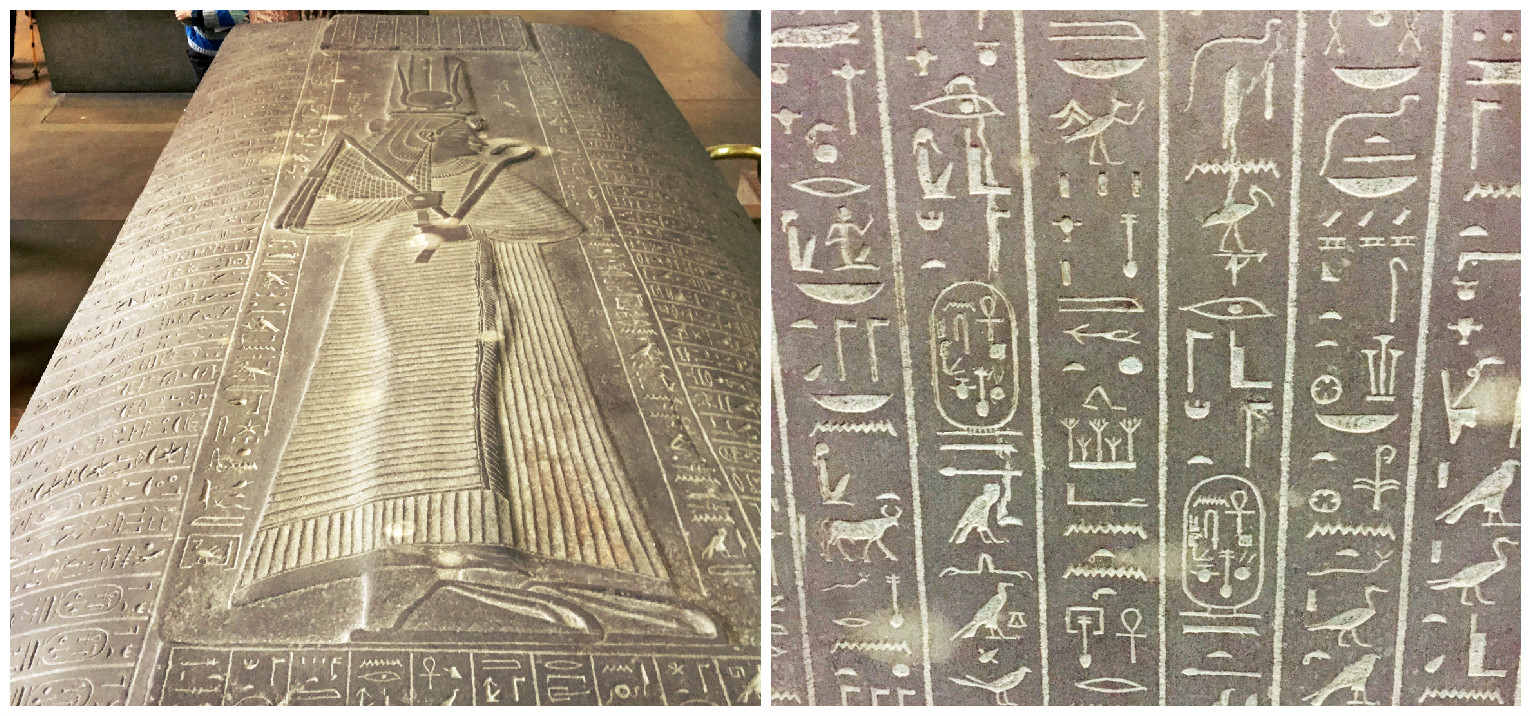


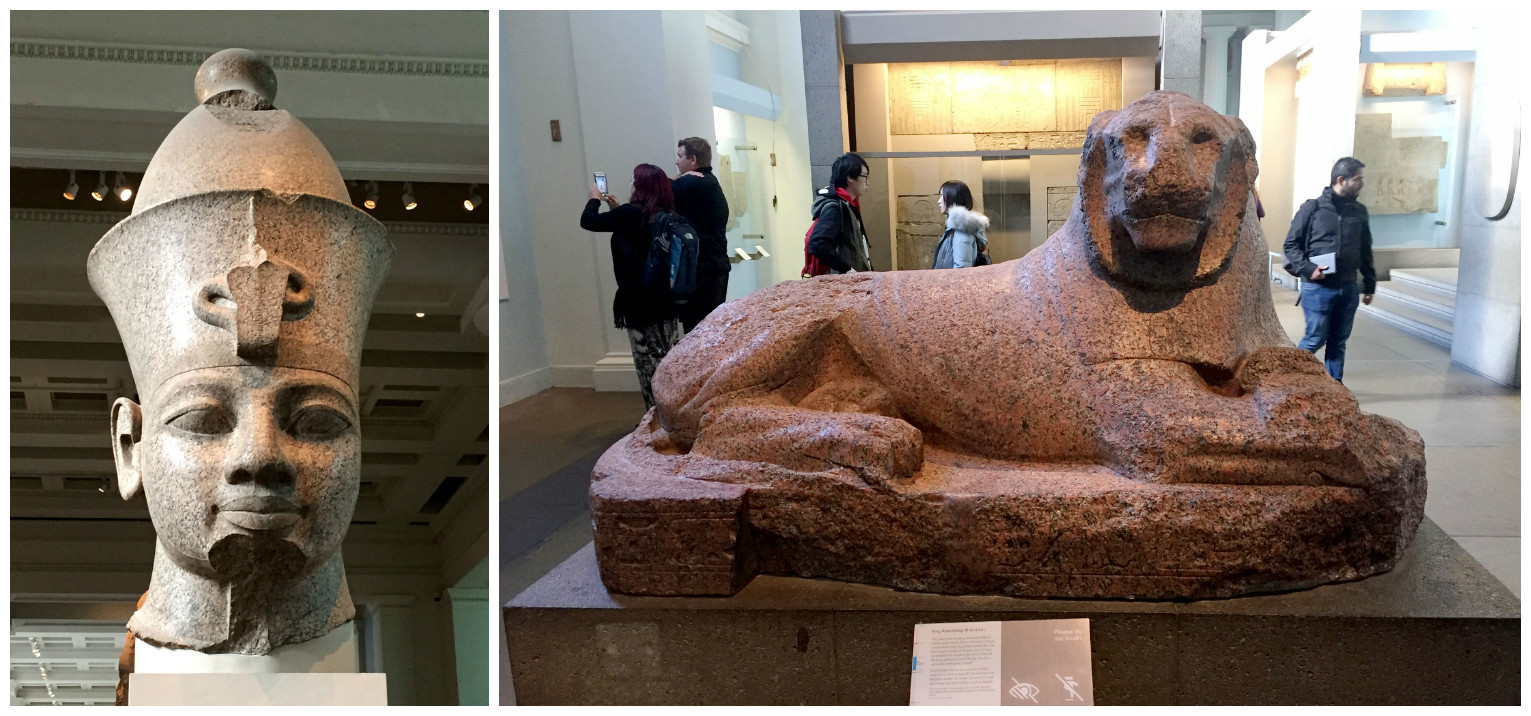

Perhaps the greatest Mesopotamian civilization I’ve never heard of until today. They occupied the area of modern-day Turkey, to Iran, and Egypt. In their day, lions were said to be common pests (how long ago?!). The king, as protector of the realm would hunt these lions. He wouldn’t have to go far though, because he ordered his men to collect lions to place in his arena where he would then kill them for sport and show. These reliefs are perhaps the most detailed works of Assyrian art to exist.

These enormous statues are called Lamassu and they provided magical protection as guards to entrances of cities, palaces, and temples. The British Museum has SIX of them! They were carved from a single block of stone and weigh up to 30 tons. Though they were transported whole in ancient times, the two pictured in the center above had to be cut into four pieces in order to be transported to London. The lamassu on the far right is on a lion’s body, as opposed to the body of a bull like the other three.
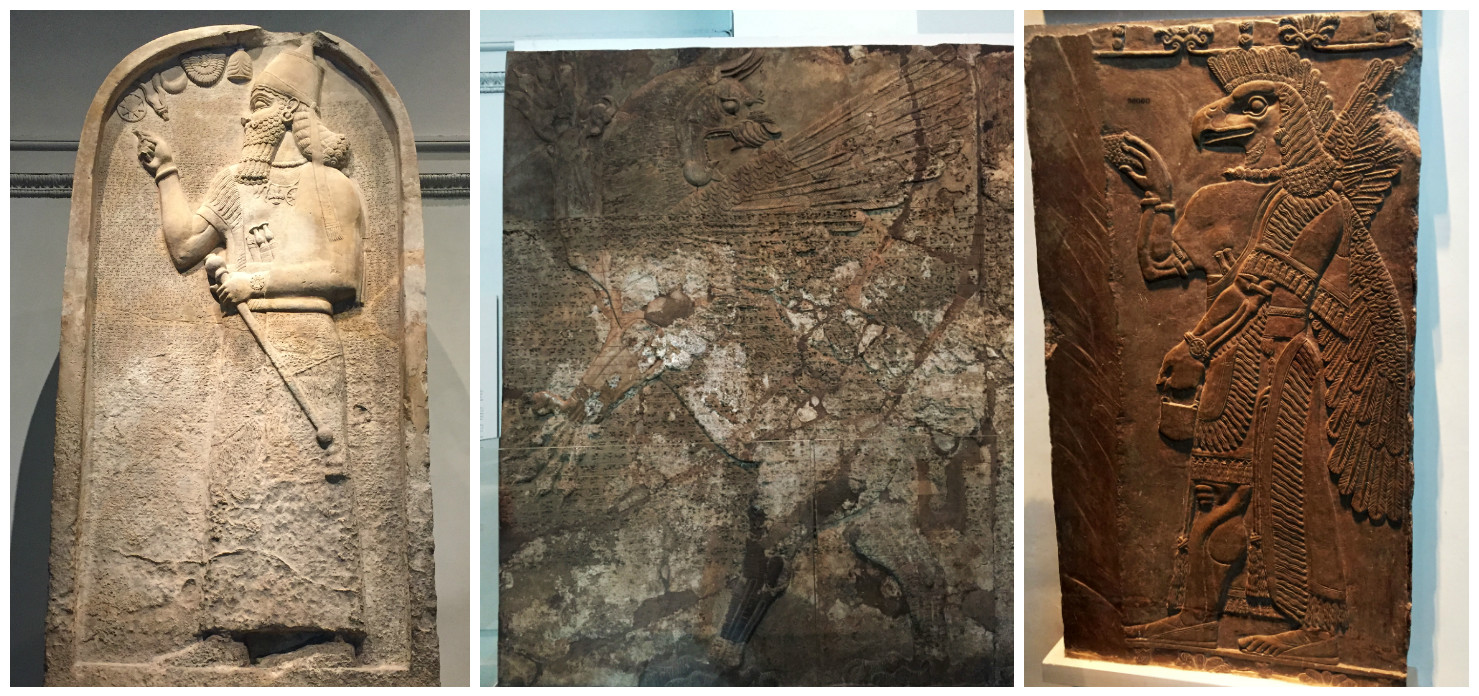
Greek Pottery/Stonework

The British Museum has an extensive collection of Greek pottery with all sorts of themes!
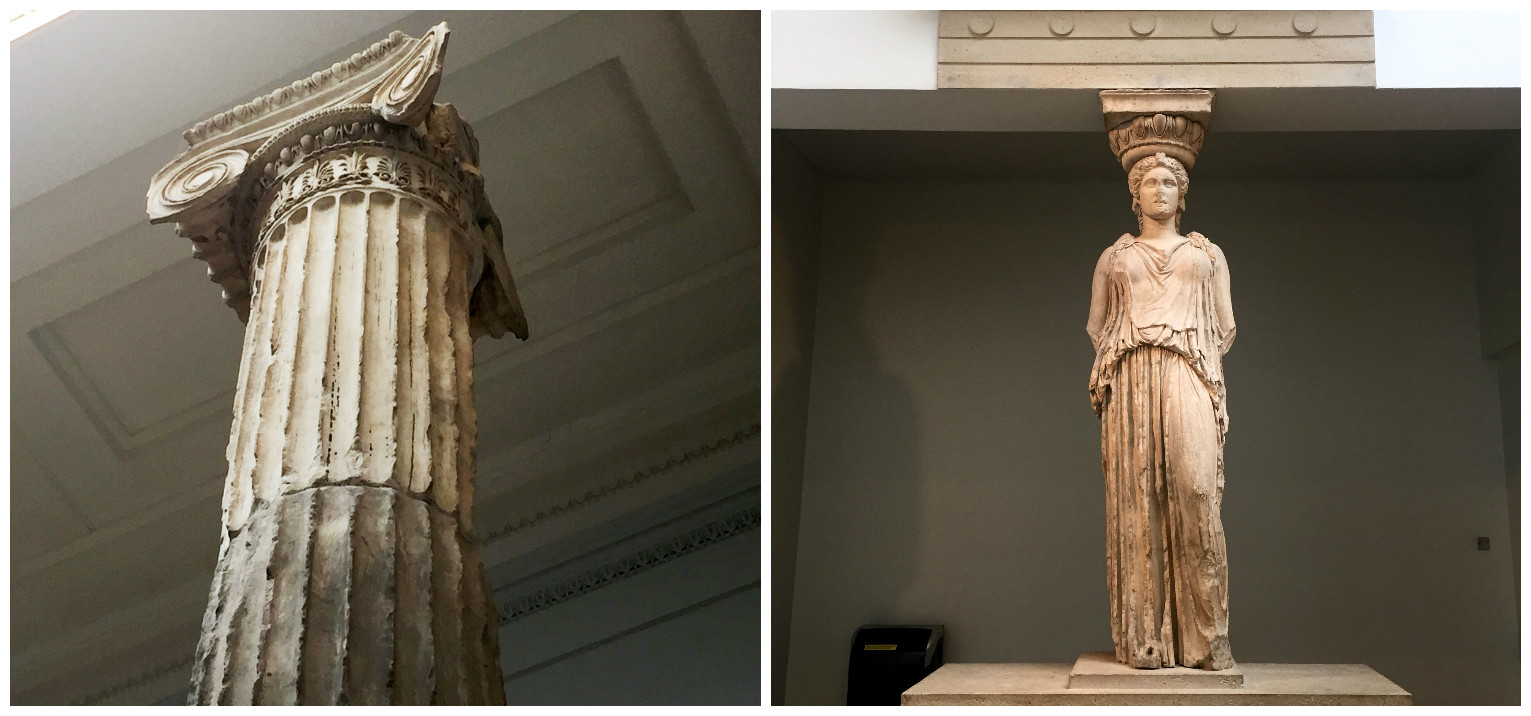
It also has some of the most preserved structural support beams for the Erechtheion, one of the buildings in the Greek Acropolis.
The Parthenon Sculptures
Like the Rosetta Stone, these are a massive deal.
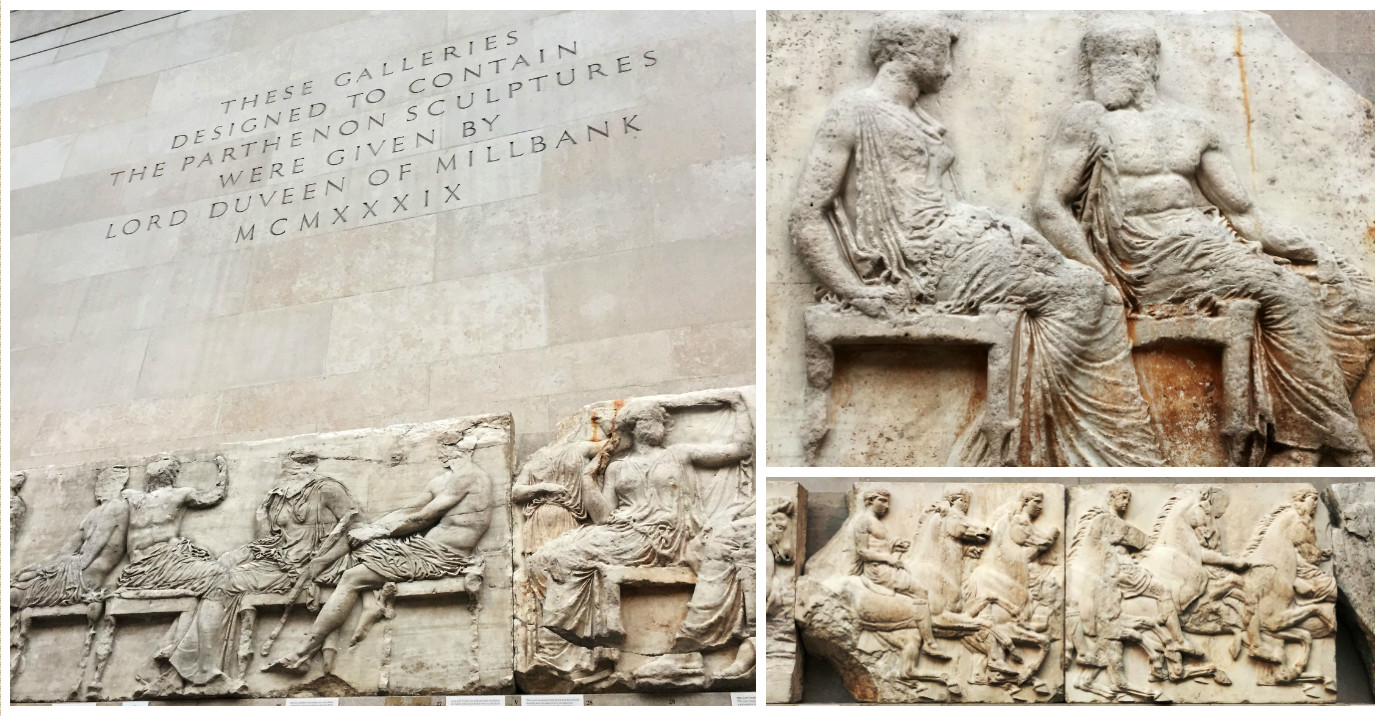
The Parthenon was built as a temple to Athena, the guardian of Athens (for which the city is named) who helped them defeat the Persians. Thus, she’s the central figure in much of the art.

The figures Athena and Zeus are absent from the remains of the Eastern Pediment (that space under the a-frame roof, and above the columns), but the remaining gods show the triangular shape.
The Parthenon had 92 high-relief marble metopes, or decorative rectangles, measuring about 4x4ft each. The series display a battle between centaurs and the Lapith people. The story goes the Lapith invited neighboring centaurs to wine and dine with them at a marriage feast. The centaurs, being half man and half beast (thus having a “civil and savage nature”) got too drunk and tried to rape their women and carry them off causing a vicious battle.

The Parthenon was so richly decorated, there were 50 figures on the West Pediment. Only fragments of 11 figures survive.

The Parthenon was originally built to honor Athena nearly 2,500 years ago but it was not maintained over all this time. It was also a church of the Virgin Mary of Athenians, a mosque, and then an archaeological site. A Venetian bomb from rebels trying to take back their land from the Turks during the Ottoman Empire caused most of the visible damage we see today. During this time, the Turks had also decided to hold arms inside The Parthenon. After it was hit, it continued to burn for two days.
Fragmentation of the Parthenon as a caused by this war were continue to be fragmented, as pieces of these works are caught between nations with parts here in the British Museum and others in Athens.
It’s a tough debate, trying to resolve where these great works should be displayed.
Should the nations of origin always have the right to their creations? Or should the current caretakers who have worked to preserve and build a story of the world’s culture maintain the possession they’ve established over centuries? Do these works belong to the location of their design, or do they belong to the world?
Boundaries are perpetually moving, as are people, and more often than not we are learning how the people of the world share more similarities than differences. Often times it’s by juxtaposing things that seem so totally different that we can see parallels, relationships, reactions, and rapport, thereby creating deeper understanding of why ad how the world came to present day.
As for the Parthenon in particular, the surving works of the Parthenon are split between London and Athens. Lord Eligin of England, an ambassador to the Ottoman Empire and Greek art lover got permission of the Ottoman authorities to move these sculptures. He took about half of them to London for public display where they helped encourage respect and love for Greek history while animating sympathy for the Greek cause as they sought independence.
The British Museum goes through great lengths to present the debate both in the museum and online at britishmuseum.org
I forgot the mention, entrance to The British Museum is completely free (and kids eat at the Museum cafe for free too)! While The New York Met is free, you still must line up to get one where the museum employee will ask you how much you would like to donate.
Do you have opinions or thoughts?
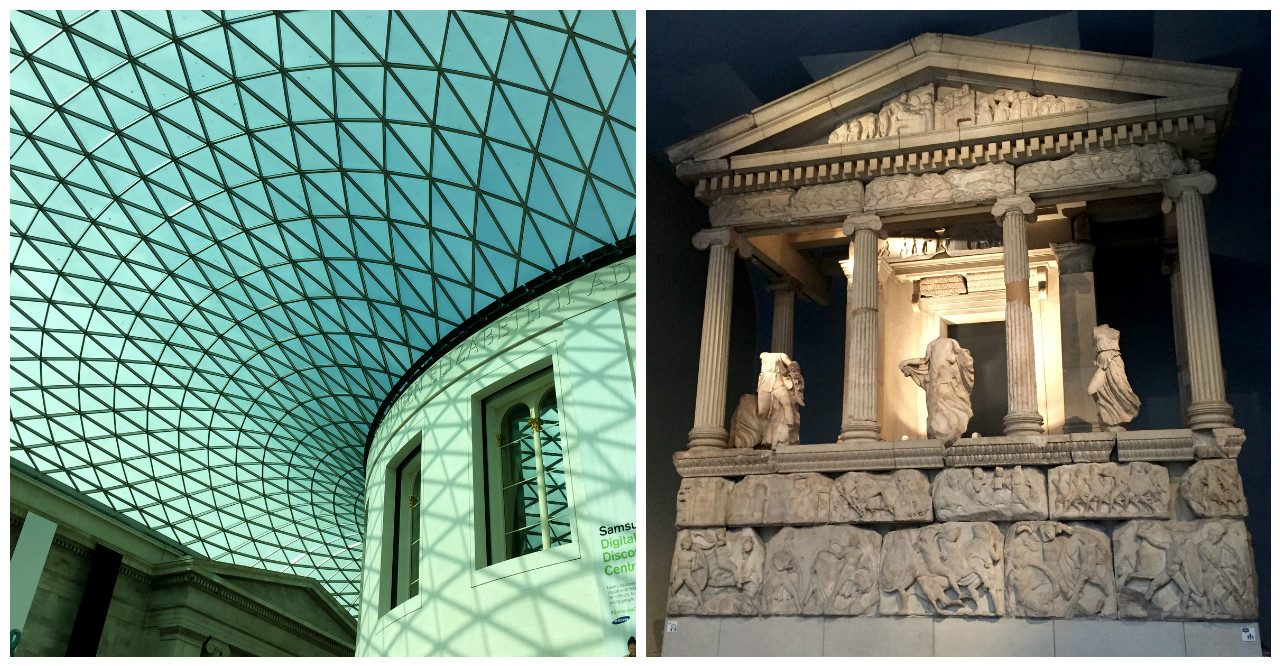
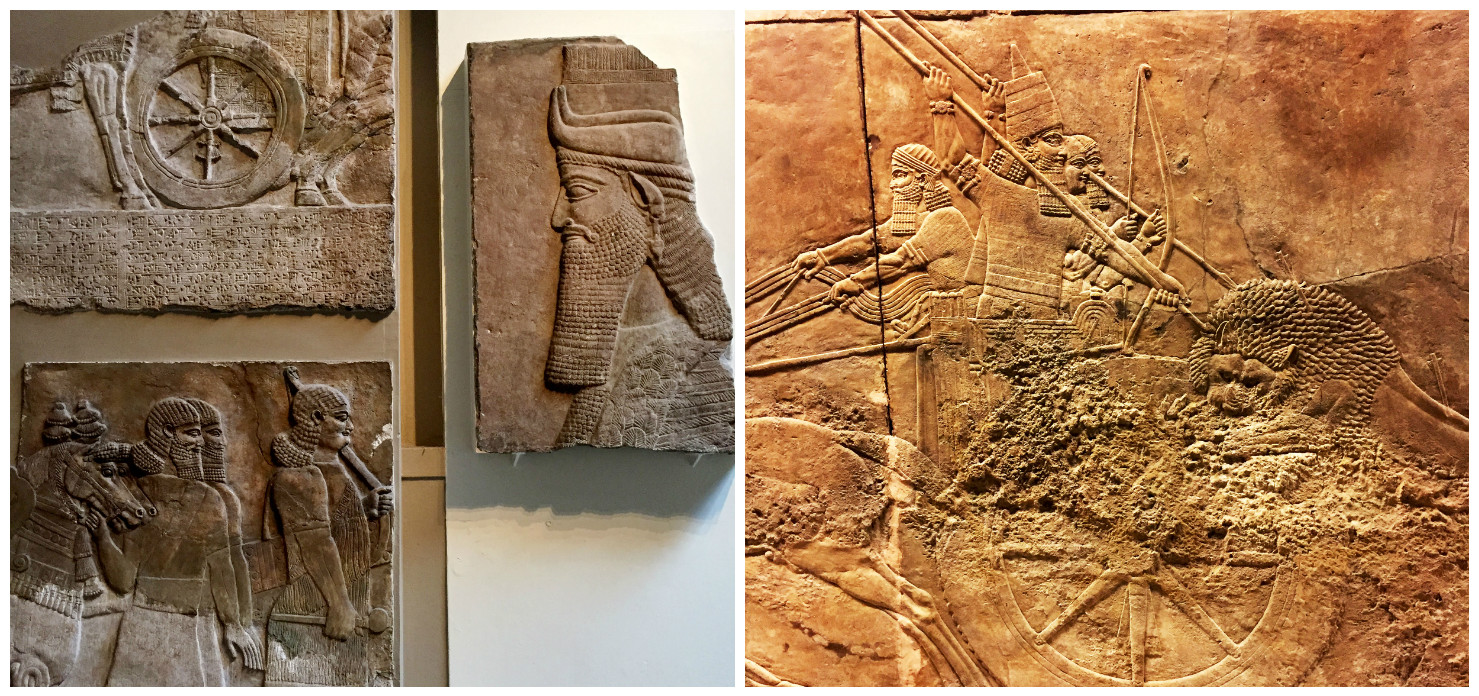
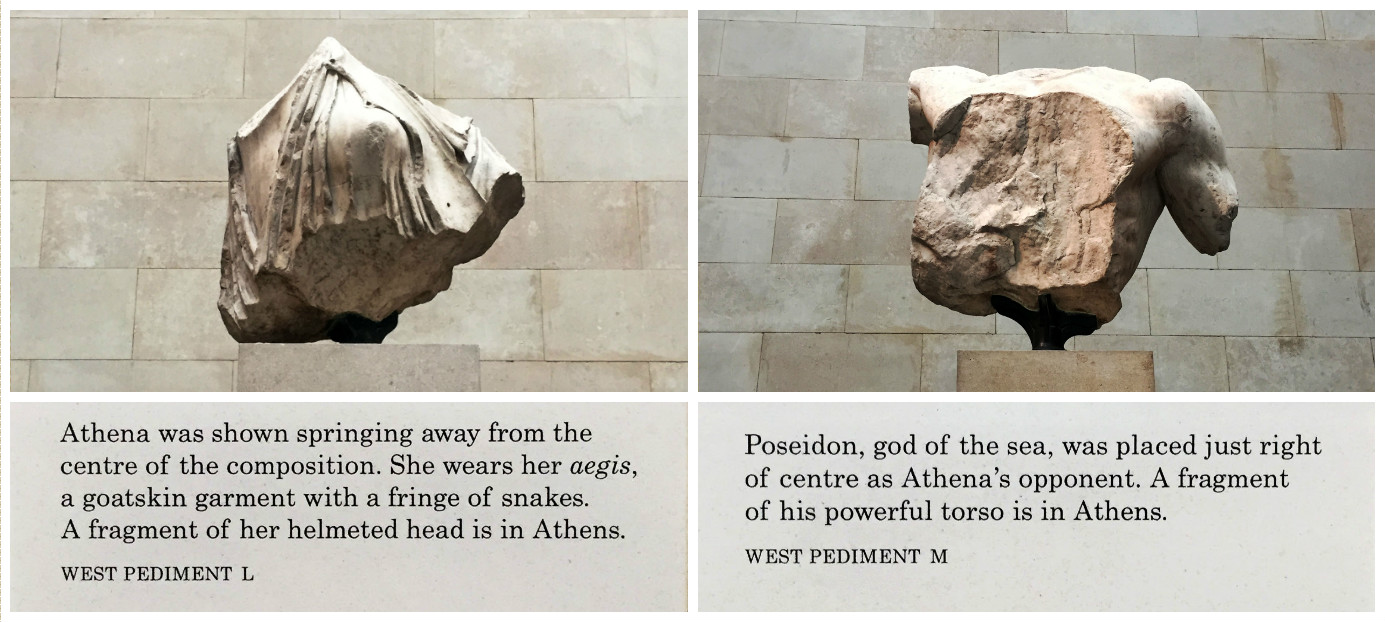
Fantastic! Thanks for sharing these photos and stories.
😀
No pros or cons to voice…no, wait. I remembering appreciating how those amazing artifacts were collected and placed on view in one place for all to see, as you stated. I think if the artifacts were obtained with permission, or have been in possession of the museum for some time, AND are respectfully displayed as well as cared for, then why not retain the possession of them? Just ruminating off the top of my head….great post, Sam!
Yes, great points! It doesn’t look like they’ll be moving for now =)
I agree with red. It is nice to be able to preserve history for all to see (it is free) I believe the museum should continue being the Guardian of this treasures. Some day people will (I hope) learn to take care and display their heritage , but until then Thank you Museums for sharing history and master pieces .
Well said!